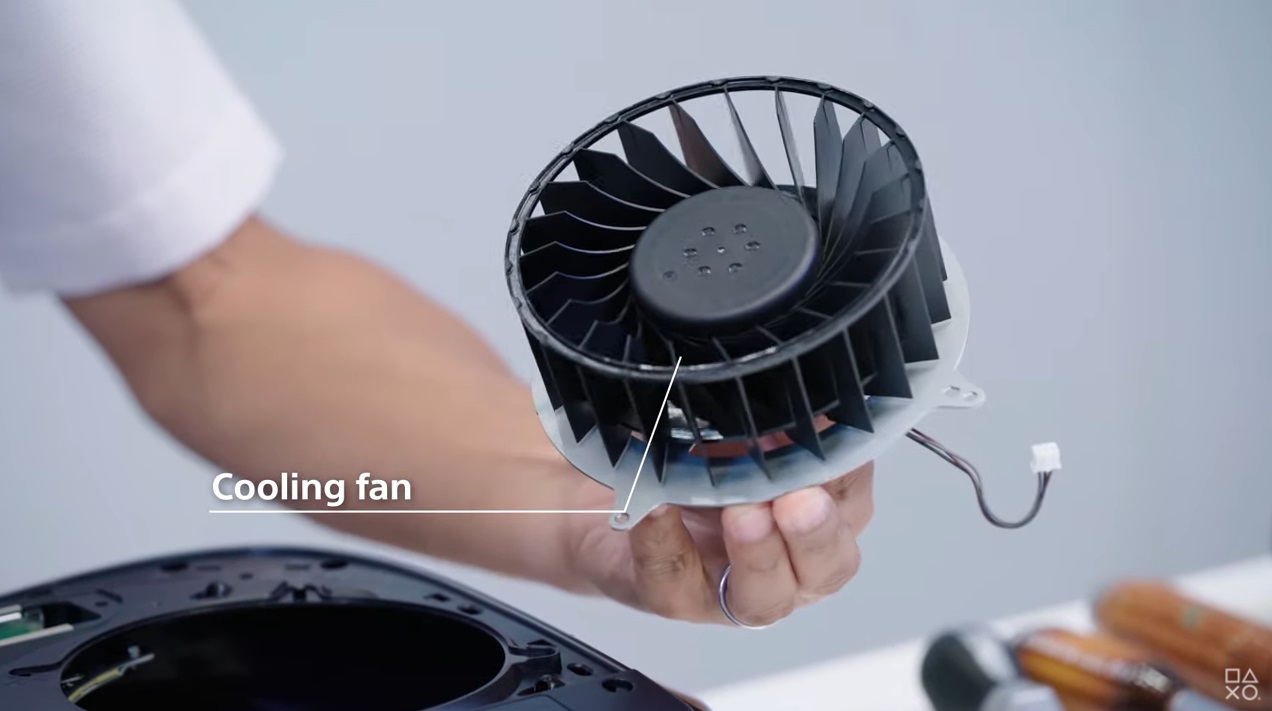LordOfChaos
Member

西川善司の3DGE:PS5の作り方、教えます。メカ設計担当者に聞いたこだわりの内部設計
2020年10月7日,SIEが公開した「PlayStation 5」の公式分解動画は大きな反響をもたらした。この中では,液体金属を採用した熱伝導材料など,初めて公開となるトピックがいくつかあった。今…
www.4gamer.net
There's a lot in there so I recommend just using Google Translate, but some translated highlights:
Ale it is detailed, some M.2 SSDs are equipped with heatsinks. Is there any caveat when such SSDs are installed in expansion slots? Mr. Kaoru: The heat sink has a physical design that can be stored as long as it is less than 8 mm in height from the board surface.
The expansion slot has a metal cover, but it is better to avoid contact with it as much as possible.
If a tall SSD with a heat sink is installed, it may interfere with the metal
cover. Chassis and screw holes to assemble the metal cover may be damaged because it is made of plastic. Therefore, as an expansion SSD, it would be better to avoid products with extremely tall heat sinks.
In addition, M.2 SSDs corresponding to PCIe connections are well known that heat generation at high loads is a major problem. Some PC motherboards have heat sinks for M.2 SSDs, but what kind of devices does the PS5 use? Mr. Liu: Two exhaust holes are provided for the expansion SSD slot.
Since the expansion slot is located near the intake fan, it is structured to absorb heat at negative pressure from the exhaust hole.
.....
Otori: We have wanted to use liquid metal for a long time. However, since liquid metal is conductive, if it leaks to the board side, it will cause a short circuit. Above all, liquid metal is highly corrosive to aluminum, which is used for components such as heat sinks. When handling such materials, measures are required for manufacturing facilities. We spent more than two years preparing for these problems.
Although the composition of the liquid metal and the manufacturer of the joint venture were not disclosed, it is said that a common gallium-based alloy is used for the liquid metal-based TIM. However, in the interview, he emphasized that it was a proprietary product custom made by SIE.
In the disassembled video of TIM, you can see a sponge-like component around the APU part. This prevents the liquid metal from leaking out to the board side.
Liquid metal TIM also exists for PC CPUs and is used among CPU overclockers, for example. However, as Otori says, there are problems with conductivity and corrosion. There is even a warning to use copper-based heat sinks in TIM for PCs.
Why did you spend more than two years to use such a difficult material?
Otori: The main reason is cost. In thermal design, you have to put the cost close to the heat source. As a general thermal design metaphor, let's say you spend 10 yen for a TIM and 1,000 yen for a heat sink in the cooling structure of a certain system. If you change to a 100 yen TIM, you can get the same cooling effect with a 500 yen heat sink. In other words, you can reduce the total cost.
Even after overcoming the difficulties in handling and manufacturing, liquid metal was finally used in PS5 to achieve a great effect.
The main heat sink that cools the APU is connected to the board through the A-side shield plate made of galvanized steel plate (SPCC: Steel Plate Cold Commercial). The APU portion of the A-side shielding plate has a square hole in it so that the block part of the heat sink will directly contact with the APU.
Otori: The heat sink is made of aluminum, but the block in contact with the APU is made of copper. However, can you see that this block is plated in silver? This is to prevent corrosion from liquid metal.
As mentioned earlier, gallium-based liquid metals are highly corrosive to aluminum, but copper is said to be able to withstand that. However, according to the tests conducted by the PS5 development team, even copper is not completely resistant to the gallium-based metal used in this project, TIM, so they are also taking measures to protect it with plating.
Cooling the back of the board was more difficult than the surface
The B-side, which is the back side of the machine, has many highlights as well, and the B-side is dotted with reasonably large heat sources such as GDDR6 memory, DC/DC power circuits, and flash memory chips.
How are these parts of the device being treated for heat?
Otori: Actually, we are more concerned with the cooling of the B-side of the device than the A-side. Looking back, it may have been easier to deal with side A because we could foresee the high heat source in advance (laughs). In fact, the B-side has as much heat as a PS4's APU, so we had to cover the B-side. That's why the shield board covering the B-side can be used as a heat sink.
According to Otori, the B-side of the board is not made of galvanized steel, as the A-side is, but of aluminum, which has excellent thermal conductivity and heat dissipation.
The outer side of the aluminum shield board has a small three-dimensional heat-dissipating fin, and the inner side where it makes contact with the B-side has a heat pipe, making it look like a shield board as well as a heat-dissipating plate. This heat pipe is connected to the heat sink mainly for the purpose of heat transfer from the DC/DC power supply circuit. The wind from the cooling fan flows through the shield board and wipes away the heat.
By the way, if you look closely at the inside of the shield board, you can see that the ground surface is coated with gray material. What is this?
Otori: It's TIM. It's applied to the shield board, the DC/DC power supply circuitry, the GDDR6 memory, the SSD flash memory and the part where the heat source is installed. It's used to transfer heat from the heat source to the shield board.
The TIM applied to the shield looks like a round rubber sheet, but it is in liquid form during the manufacturing process. It hardens over time and eventually takes on a rubber-like texture, according to the company. The chips, which are the heat source of the chips, are expected to have a certain amount of variation in height, but this TIM can absorb that variation because it is in liquid form when it is applied.
The fan is made of fiberglass polybutylene terephthalate. The advantage of this material is that it is strong and the shape deformation due to heat is small. The number of feathers is calculated from the balance between the required positive pressure and air volume. Even in a fairly harsh environment, the main body is designed with plenty of room to prevent it from failing.
A thick fan is adopted, and the wind is sent to both A side and B side.
The size of the fan is 120 mm in diameter and 45 mm in thickness, and it is quite large and thick as an electric fan implemented in a game console. This is to achieve a high level of calm by slowly turning the big fan.
...
Otori: Various games will be released in the future, and data on the APU's behavior in each game will be collected. We have a plan to optimize the fan control based on this data.
The PS5's thermal design, including the speed of the air-cooled fans, is said to have a generous margin of safety. If a game is under heavy load for a long period of time, they can increase the fan speed to enhance cooling performance, even at the expense of quietness.
Last edited:




